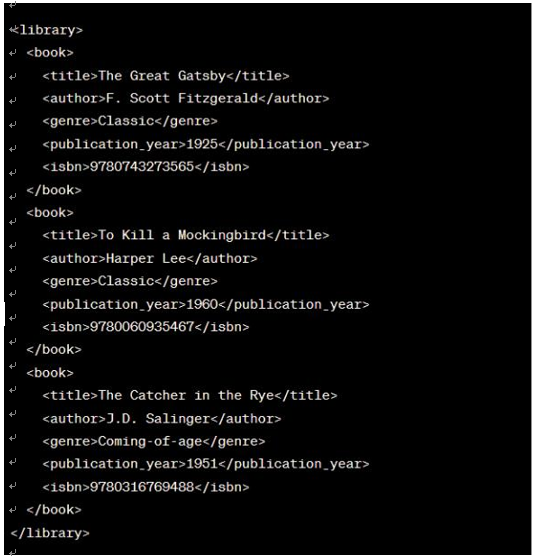JavaScript Object Notation file format – Describe core data concept
JavaScript Object Notation file format
JSON is a widely used file format for representing and exchanging structured data. It provides
- lightweight, human-readable, and platform-independent format that is easy to parse and generate. JSON files use a hierarchical structure with key-value pairs to represent complex data structures. Let’s explore the characteristics and benefits of the JSON file format.
Figure 1-4 shows a JSON file that stores information about employees in a company. The file consists of key-value pairs, with each pair representing a specific attribute of an employee. The structure allows for nesting and therefore can represent complex data relationships. An employee’s record might include attributes such as name, position, department, salary, and more. Nested objects could contain additional information such as address or skills.
Skill 1.2: Identify options for data storage CHAPTER 1 7

FIGURE 1-4 JSON file format representation
JSON files are commonly used for data interchange between web-based systems and APIs. They are the preferred format for transmitting structured data over HTTP requests and responses. Additionally, JSON is frequently used for configuration files, log files, and data storage in NoSQL databases because of its flexibility and ease of use.
8 CHAPTER 1 Describe core data concept
XML data format
XML is a versatile file format used for storing and exchanging structured data. It provides a hierarchical structure using tags to define elements and using attributes to describe element properties. XML files are human-readable, platform-independent, and widely supported, making them suitable for a variety of applications.
Take, for instance, an XML file that stores information about books in a library, as shown in Figure 1-5. Each book is represented as an XML element, with nested elements representing different attributes such as title, author, genre, and more. XML allows for flexible nesting and customization and therefore can represent complex data structures and relationships.

FIGURE 1-5 The XML file format
XML files offer several advantages. They are easily readable and understandable by both humans and machines. The hierarchical structure of XML facilitates the representation of structured and semi-structured data, making it suitable for diverse use cases. XML files are also self-descriptive, as the tags and attributes provide meaningful metadata about the data they represent.
XML is widely supported by programming languages, databases, and web technologies, making it highly interoperable. It is commonly used for exchanging data, writing configuration files, and processing complex data structures in various domains such as web services, content management systems, and scientific research.
Skill 1.2: Identify options for data storage CHAPTER 1 9
